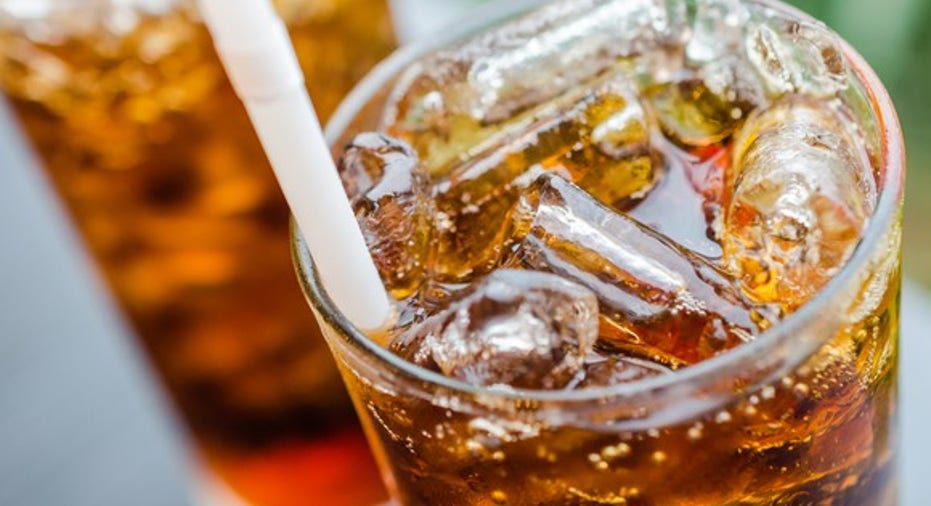Are Soda Companies Hazardous to Your Financial Health?

Image source: Getty Images.
Coca-Cola (NYSE: KO) and PepsiCo (NYSE: PEP) are among the strongest and most powerful companies in the consumer sector on a global scale. However, both soda companies are facing strong headwinds due to changing consumer demand in the industry, and this is a major reason for concern among investors. Are Coca-Cola and PepsiCo on a long-term decline?
Survival of the fittest
Excessive sugar consumption has been linked to all kinds of health problems, like obesity, weight gain, and diabetes among children. The Food and Drug Administration recommends that Americans should consume no more than 50 grams of added sugar per day, which is roughly the same amount of added sugar in a single can of Coke.
Increasing concern about sugar in sodas has been affecting demand for traditional sodas over the past couple of decades. Consumers are also cutting back on diet soft drinks due to worries about the negative health implications of artificial sweeteners. According to data from Beverage Digest, per-capita soda consumption in the U.S. fell to its lowest level since 1986 last year.
Interestingly, this is benefiting Coca-Cola and PepsiCo in an unexpected way, as they are selling their products in smaller packages, which has positive implications in terms of pricing. Consumers are cutting back on soda consumption, but they still want to enjoy an occasional soda from time to time. This means that big soda bottles are being replaced by 7.5-ounce cans and 8-ounce glass bottles.
These smaller packages mean higher prices per ounce, so both Coca-Cola and PepsiCo are making more money by selling less volume, and this is buffering the decline to some degree. However, this is hardly a sustainable path to growth in the long term, and investors have valid reasons to be concerned about falling soda demand and how this could affect Coca-Cola and PepsiCo over the coming years.
Brave new soda companies
The decline in soda consumption has been in place for a long time now, and both soda giants are actively working to diversify their portfolios in order to adapt to emerging consumer trends.
Coca-Cola has an enormously valuable portfolio featuring over 500 brands, and 20 of those brands make over $1 billion each in global annual revenue. Coca-Cola is not only the market leader in sparkling drinks, but also the top player in categories such as juice and ready-to-drink coffee around the world. In fact, among the company's 20 billion-dollar brands, 14 of them are products with a far better health impact than traditional sodas, including names such as Minute Maid, Aquarius, Dassani, Simply, and Powerade.
Coca-Cola is the market leader in both sparkling and still drinks. However, there is a big difference between the two markets: The company owns 50% of value share in sparkling, but only 15% in stills. If most of the growth opportunities in the non-alcoholic drinks industry are coming from still products, then Coca-Cola is well positioned to profit from both a growing market opportunity and room for market share gains in this segment.
Coca-Cola is facing a deceleration in growth lately, but sales are still moving in the right direction, and management is expecting to deliver a 3% increase in organic revenue during 2016. On a longer time frame, the company believes it can sustain revenue growth in the mid-single digits per year toward 2020.
PepsiCo is looking even better than Coca-Cola in terms of portfolio diversification. The company has aggressively invested for growth in healthier product categories over the past several years, and these investments are paying off in spades.
PepsiCo's "guilt-free" portfolio of products, which includes naturally healthy products and low-calorie versions of traditional drinks and snacks, currently accounts for 45% of the company's overall revenue base. According to management, Gatorade captured more than 40% of the enhanced water category volume growth in the first half of 2016.
The company is being hurt by global economic instability, but financial performance remains healthy when leaving macroeconomic headwinds aside. PepsiCo announced a 3.3% increase in organic revenue last quarter, and core constant currency earnings per share increased 6% year over year.
The long-term view
Both Coca-Cola and PepsiCo have impressive competitive advantages allowing them to successfully introduce new products on a global scale. Brand recognition, financial resources to invest in research and development, formidable marketing machines, and gigantic distribution networks are among the factors setting these companies apart from smaller players in the industry.
It could take time and money for Coca-Cola and PepsiCo to fully adapt to changing demand in the non-alcoholic drinks market, and this will probably continue weighing on growth over the midterm. On the other hand, the two companies are strong enough to continue delivering what customers want over the years and even decades ahead.
A secret billion-dollar stock opportunity The world's biggest tech company forgot to show you something, but a few Wall Street analysts and the Fool didn't miss a beat: There's a small company that's powering their brand-new gadgets and the coming revolution in technology. And we think its stock price has nearly unlimited room to run for early in-the-know investors! To be one of them, just click here.
Andrs Cardenal has no position in any stocks mentioned. The Motley Fool owns shares of and recommends PepsiCo. The Motley Fool recommends Coca-Cola. Try any of our Foolish newsletter services free for 30 days. We Fools may not all hold the same opinions, but we all believe that considering a diverse range of insights makes us better investors. The Motley Fool has a disclosure policy.